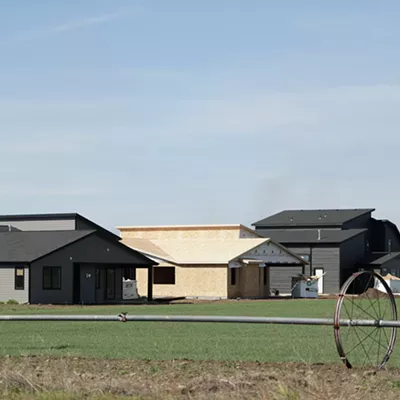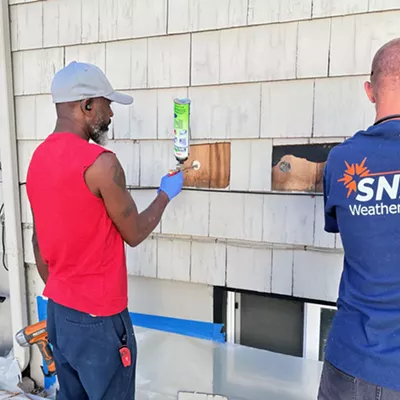Problems abound. Geographically, Blackwell Island lies entirely in a 100-year floodplain and was inundated in 1933, 1948, 1956, 1974, 1982 and 1996. Future floods may leach toxins stored "safely" under a proposed impervious cap. The lake's only outlet is like a bathtub drain, with all the lake's water flowing through it into the Spokane River. Any released contaminants will immediately flush downstream.
The island also sits above the Rathdrum Prairie Aquifer. A lake seal separates surface and ground water, and there is no way to determine if excavation will tear it open or how such a breach would be repaired. Because of past Silver Valley mining activities, the lake's northern end and the marina basin contain large amounts of heavy metals and other contaminants. Excavating may pierce this lake seal and permanently introduce toxic waste into the aquifer and Coeur d'Alene's nearby wells.
The proposed marina plan's shortcomings include an inadequate environmental assessment of the basin's heavy metals, according to the Army Corps of Engineers. The Corps also finds the developer's submitted data does not support its optimistic conclusions. Thorough independent testing, paid for by the developer, is needed. A neutral party would oversee the testing and send reports directly to permit issuing agencies.
Because of the assessment's inadequacy, the Corps of Engineers cannot determine the area of contamination. No one knows which sediments to haul offsite and which ones to cap.
If the Corps issues a permit, who will monitor the sediment removal and storage operation so it meets the permit requirements? No one but the developer. This would be comparable to a homebuilder inspecting and approving his own building project. To assure permit compliance, the marina's developer needs to pay for periodic, independent inspections by the Corps of Engineers, the Department of Environmental Quality and the Department of Lands.
No repository site has been named. Kootenai County's landfill cannot be used. Its policy prohibits shipments of petroleum-contaminated soil and, by implication, heavy metals. The developer wants permits issued before finding a repository. Where will the toxic waste be safely stored if no repository is found?
Flooding has repeatedly covered Blackwell Island. If the island's elevation is raised with sediment fill as proposed, floodwater -- constricted to the bypass canal and Spokane River -- will back up and raise lake levels. How will lakeshore property be affected? Will fast-flowing water undermine the canal and Spokane River bridges? Independent studies of these potential problems should be completed before any permits are issued.
The marina's sales, service and fueling facility should be relocated at the entrance to the lake to reduce dangerous boat congestion, enable non-motorized boaters to paddle safely through the marina and minimize pollution.
Imagine the traffic jam that will occur when hundreds of yachts travel the marina's narrow, half-mile passage to the gas pumps located in its northern cul-de-sac, fuel up and travel that same half-mile back to the lake.
It would probably not be safe for people paddling up the Blackwell canal to the lake and returning to negotiate this congestion.
Furthermore, gas and oil spilled at this northern fuel depot would quickly flow into the canal and Spokane River and could cause significant damage.
Finally, the proposed plan excessively encroaches into the public lake. Ample large-boat moorage already exists at the Coeur d'Alene Resort and Silver Beach. The Department of Lands needs to keep the lake surface public and not permanently lease it for private development.
& lt;span class= "dropcap " & B & lt;/span & lackwell Island marina is located where the lake empties and above the sole-source aquifer. The area contains dangerous amounts of toxic waste; the submitted expansion plan does not adequately assess the content or extent of these toxic sediments, nor does it indicate where they will be stored. The plan does not provide for independent monitoring or offer to post bonds. And the marina's proposed sales, service and fueling facility location creates danger for non-motorized boat travel.
Moving the marina boat facility to Blackwell Island's southern tip solves these problems. It would reduce congestion, improve safe non-motorized boat travel and make spill cleanup possible. Relocation would also greatly shrink the proposed excavation's volume and preserve the existing cul-de-sac wetland.
Independent testing needs to be done before permits are issued. If they are issued, independent monitoring is needed throughout construction. The marina boat facility needs to be relocated to a safe place, and the encroachment into the lake minimized.
Wes Hanson lives in Coeur d'Alene.
















